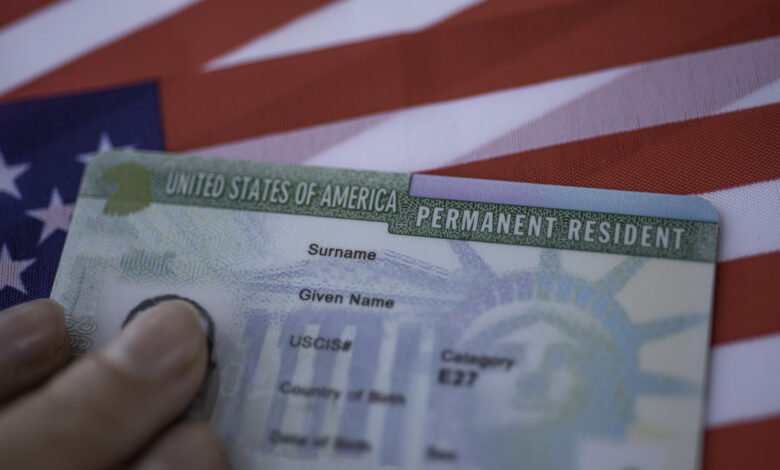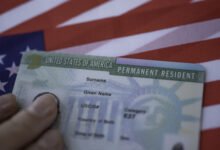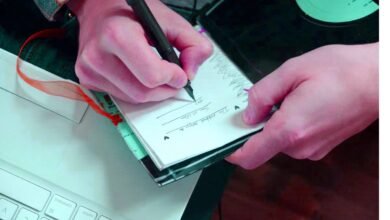How to Meet the Dhanasar Criteria for EB-2 NIW Without an Employer — Explained in Simple Terms with Real Examples
Learn how the EB-2 NIW green card lets skilled professionals gain U.S. residency without employer sponsorship, under the Matter of Dhanasar framework.

The EB-2 NIW green card provides a route to permanent residency for professionals who can demonstrate that their work significantly benefits the United States. This option bypasses the usual employer sponsorship and labour certification processes. USCIS continues to evaluate EB-2 NIW petitions under the framework established in Matter of Dhanasar, with ongoing guidance emphasising the importance of robust evidence. This article breaks down the process in straightforward terms, using real-world examples and focusing on effective evidence.
Why choose EB-2 NIW, and how does it differ from the standard EB-2?
The EB-2 category is aimed at professionals with advanced degrees or exceptional abilities who are seeking a green card through employment. The standard EB-2 process requires a job offer from a U.S. employer and a labour certification (PERM) from the Department of Labor, which proves that no qualified U.S. workers are available for the position. Due to the advertising and recruitment steps involved, this process can take months or even years.
By contrast, the EB-2 National Interest Waiver (NIW) green card exempts applicants from the PERM and job offer requirements if their work serves the ‘national interest’. Introduced to attract talent in critical areas, the NIW visa prioritises broader US benefits over protecting local jobs. For example, if your project advances public health or technology, you may qualify even without an employer.
NIW is often better suited to roles in academia, research and development (R&D), and public benefit initiatives. Consider, for example, scientists developing vaccines during a health crisis or engineers improving infrastructure under government programmes. These fields involve innovation, so traditional job market tests do not fit well. According to the USCIS Policy Manual (Volume 6, Part F, Chapter 5), there has been increased interest in NIW petitions, with guidance on substantial merit being clarified.
Who Qualifies for EB-2 and Why NIW Allows Self-Petitioning
There are two main paths to EB-2 eligibility: an advanced degree or exceptional ability. To qualify with an advanced degree, you need a master’s degree or higher (or a bachelor’s degree plus five years of progressive experience) in a field in which the job requires it. Exceptional ability means standing out in the sciences, arts or business, as evidenced by at least three of the following criteria: degrees, ten or more years of experience, licences, a high salary, memberships or peer recognition.
NIW allows you to self-petition via Form I-140, even without an employer, provided that you meet the basic EB-2 requirements and pass the national interest test. However, this does not bypass the entire process — you must still file Form I-140 and, if your priority date is current, file Form I-485 for adjustment of status (AOS) concurrently. Self-petitioning is ideal for independent researchers or entrepreneurs whose work has a national impact. USCIS guidance stresses that self-petitions must clearly demonstrate how qualifications benefit the US, avoiding vague claims.
The Three Dhanasar Criteria Explained in Simple Terms
The 2016 AAO decision in the case of Dhanasar established the three-prong test for NIW, and the USCIS has provided more detailed guidance on the required evidence. Here’s a breakdown:
Criterion 1: Substantial merit and national importance
Your proposed endeavour must have real value and a significant impact on the United States. ‘Substantial merit’ means addressing important issues such as public health, infrastructure, science or the economy. ‘National importance’ considers the effects on the whole country, such as reducing healthcare costs or boosting security, rather than just local jobs.
Evidence can include publications with citations (e.g. via a Digital Object Identifier (DOI)), grants from federal agencies, patents or projects with measurable outcomes. For instance, a researcher developing AI for the early detection of diseases could demonstrate their potential to save lives across states by citing their participation in NIH initiatives.
Criterion 2: Well-positioned to advance the endeavour.
Show that you are equipped to succeed. Demonstrate how your education, experience and achievements are relevant to the project. Don’t just list your credentials — show how they’ve led to results.
We can support you with independent expert letters, portfolios of past work, awards, lead roles in projects or open-source contributions. For example, a software engineer specialising in cybersecurity might highlight their experience of leading a team that reduced breach response times, providing metrics and peer endorsements to support their claim.
Criterion 3: Waiver Benefits the U.S. on Balance
Argue why skipping PERM serves the U.S. better. Factors include urgency, innovation’s irrelevance to job ads, multidisciplinary nature, or interstate impacts that PERM can’t capture.
Evidence: Scale of the problem (e.g., national reports on climate threats), challenges in standardizing the role for PERM, or how delays harm public good. USCIS guidance stresses showing “surcharge” effects, like economic multipliers from your work.
Mapping Evidence: What to Include and How to Tie It In
Organize proof like a matrix:
|
Criterion |
Artifact |
Interpretation |
|
1: Merit/Importance |
Publications/Citations |
Show impact via citation counts; e.g., 50+ cites indicate field influence. |
|
2: Positioned to Advance |
Expert Letters |
Independent sources detail your unique skills; avoid overly praising tone. |
|
3: Waiver Benefit |
Project Scale Docs |
Use federal reports (e.g., DOE on energy) to prove urgency over labor tests. |
Expert letters must come from unbiased sources. The content should explain the national value of your role, rather than providing a personal endorsement. Common errors in tone include exaggeration without facts.
Verify metrics: Use a Digital Object Identifier (DOI) for articles, grant IDs, patent registries or government press releases. Establish causal links — for example, ‘My patent led to a 20% efficiency gain in pilots, aligning with national energy goals.’
Case studies by field (anonymised examples).
Real petitions succeed when they are tailored. Here are some patterns from approved cases:
Public health
A specialist in screening programmes demonstrated their worth by linking to CDC goals and reducing state mortality rates by 15% in pilot schemes. Evidence: Publications, expert letters from unaffiliated doctors and grant funding.
Cybersecurity/critical infrastructure
An engineer developed advanced methods for reducing mean time to repair (MTTR) on federal contracts. National importance: Protecting grids in line with DHS priorities. Proof: His role in implementations, patents and metrics from reports.
Climate/energy
A researcher piloted emission reductions at a municipal level, aligning them with EPA standards. Evidence: Patented technology, collaborations with state agencies and measurable drops in CO2 emissions.
Academia/industry
A professor transferred university technology to the standards of the time, thereby boosting U.S. competitiveness. Support: Citations, lead investigator roles and letters of support from industry.
Common mistakes and how to avoid them
Many petitions fail due to avoidable issues. USCIS scrutiny remains high, and approvals depend on strong cases.
The overuse of vague language without links, e.g. making claims about ‘innovation’ without providing metrics. Solution: Use cause-effect chains.
Only letters from insiders are accepted — USCIS wants independent views. Solution: Seek out experts at conferences or in publications.
Inconsistent dates and metrics, e.g. mismatched timelines. Check: Cross-verify all documents.
Myths: A high salary alone is enough (it doesn’t have to be tied to impact); one patent is enough (it needs to be put into context); 10 articles guarantee approval (quality is more important than quantity).
Procedural Basics: Forms and Timing
Complete Form I-140 for NIW and provide details of your case. If the dates allow, apply for AOS concurrently with Form I-485. Premium Processing (15 days) is available for Form I-140, but it does not affect the merits of the case — use it for speed.
Visa Bulletin matters: Filing Dates allow you to submit Form I-485 early, while Final Action Dates allow you to apply for approval. Backlogs for EB-2 can persist for some countries, so check monthly for updates. This affects AOS timing — for example, if the filing date is current but the final action date isn’t, you have to wait for the EAD/AP.
Fees are estimates only. Please see the USCIS website for current fees (there are no promotions).
Quick self-check checklist before filing:
- Which specific benefit do I prove for the U.S.? (For example, health savings via data.)
- How can I measure impact? (Metrics such as percentage reductions.)
- Who confirms this independently? (Three expert letters.)
- How can skills be linked to goals? (Use past successes to inform future plans.)
- Is merit national? (Linked to federal priorities.)
- Well-positioned evidence? (Education and achievements.)
- Why waive PERM? (Urgency and scale.
- Are the documents consistent? (Dates and metrics align.)











